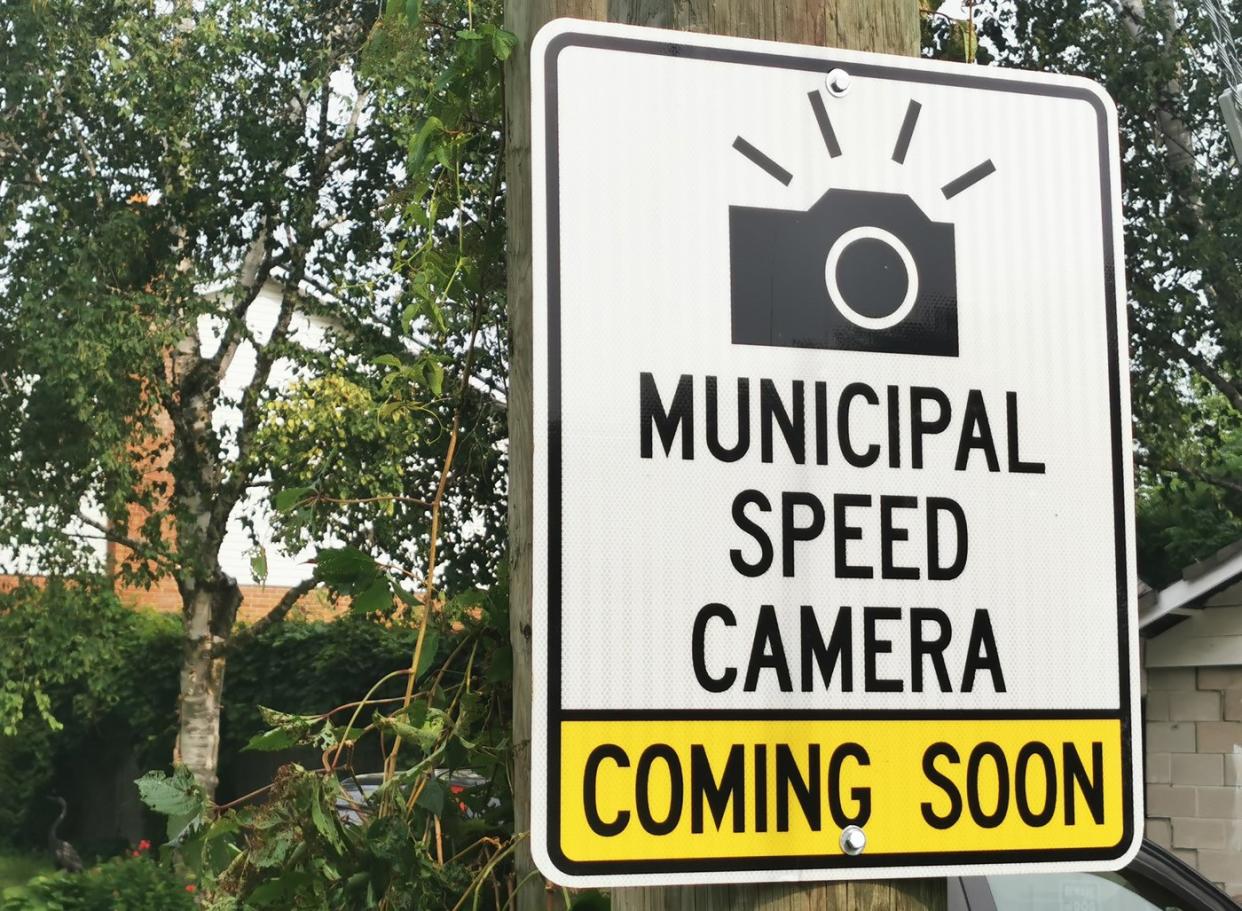Oro-Medonte turns focus toward automated speed cameras

Speeders in Oro-Medonte take note — automated speed enforcement is coming.
In a report that will be delivered to Oro-Medonte Township council on Wednesday, manager of operations Karla Musso-Garcia laid out the criteria required to establish community safety zones (CSZs) throughout the municipality, the first step to implementing automated speed enforcement (ASE), or speed cameras.
“Implementing the community safety zone policy would provide the foundational policy for developing an automated speed-enforcement program,” Musso-Garcia said in her report.
“Recent changes to the Highway Traffic Act allows municipalities to implement automated speed enforcement in community safety zones. This means speeding violations can be captured by cameras and tickets issued to the registered owner of the vehicle, regardless of who was driving," she added.
Speeding has been identified as one of the biggest problems in the townships that neighbour the City of Barrie, which has been operating speed cameras for several months.
For the past year, it’s been one topic that has dominated council meetings.
Essa Township launched an ASE program in numerous locations around the municipality at the beginning of the year and is considering adding more locations.
In the first three months, speed cameras in Essa issued more than 2,000 notices worth more than $300,000.
In late February, Essa’s first speed-camera location, which was mounted to a post on the 25th Sideroad between Line 9 and Line 10, was cut down with a chainsaw.
Springwater Township installed traffic-calming bollards in select locations this past May, and is looking at the viability of ASE across its territories.
According to Musso-Garcia’s report, reviewing the township’s CSZ bylaw and program was identified as a priority.
At their meeting on May 16, members of Oro-Medonte’s traffic safety advisory committee reviewed the draft policy and program. They recommended council’s endorsement.
However, Musso-Garcia noted, a policy or criteria does not currently exist to ensure consistent application.
“Using the standard industry-applied criteria, many of the CSZ would apply only to county roadways, not under the township's jurisdiction, and current locations in the township’s bylaw, which are linked to school zones and a particular area north of Line 15, between Highway 12 and Bass Lake Sideroad,” she said.
To ensure consistent application of the CSZ bylaw within the township, a policy was drafted to establish clear criteria pertaining to these zones.
Musso-Garcia said the policy will serve as a tool regarding traffic safety, including evaluation criteria, which will enable “effective and consistent enforcement” for the purpose of modifying driver behaviour.
“As requests for the expansion or implementation of community safety zones are received, the established policy will be followed, ensuring that baseline criteria are met before a designation is made,” she said.
The primary goal of the township’s CSZ policy is to determine Oro-Medonte's unique requirements, Musso-Garcia said.
According to the report, there are three primary justification protocols that need to be considered: road safety risk metrics (justification one), road safety risk component (justification two), and average annual/daily traffic volume (AADT) or collision data (justification three).
Musso-Garcia said many municipal policies in Ontario use a set of criteria to identify road safety risk components. These criteria are outlined by the Ontario Traffic Council and include factors such as traffic volumes, operating speeds, lanes, sidewalks, pedestrian counts and intersection quantity.
However, she added, the standards for the associated traffic and collision data volumes is limiting.
“As a result, many of the township's road networks would not meet the criteria for CSZ with these criteria alone,” Musso-Garcia said.
The proposed criteria in the draft policy would expand existing CSZs to include new CSZs established bylaw on roadways adjacent to township-wide/regional parks and community parks, as defined in the master parks plan.
“This approach will expand the current limitation of the school zones application and focus on high use, high population density community locations which would be subject to higher road safety risks,” Musso-Garcia said.
The new criteria would be applied to the following community parks:
Horseshoe Valley Memorial Park
Ramey Memorial Park
Shanty Bay Ball Diamonds
Shelswell Park
Sweetwater Park
Warminster Park (Danny McHugh)
And to these township wide/regional parks:
Bayview Memorial Park
Carthew Bay Boat Launch
Hawkstone Wharf
Line 9 Boat Launch
Lions Ball Diamonds
Bass Lake Park (line 15 N)
Richelieu Park
Shanty Bay Wharf
If endorsed by council, Oro-Medonte staff will first apply the CSZ criteria and justification process across the township road network to areas in road safety risk metrics (justification one) and bring back an updated bylaw with the criteria set out in the policy adoption.
Justification two would be applied on an as-required basis where traffic data or traffic studies have met the warrants or will undergo a speed management review for possible implementation.
Justification three would be applied on an as-required basis. An example of this could include the development of a CSZ on Line 7 South, given the intermittent traffic increases due to events at Burl's Creek Event Grounds.
According to Musso-Garcia, the implementation of the policy would be phased with the development of a new bylaw and repealing of the old bylaw from 2005.
“It is anticipated that the bylaw would return for the July 17 meeting to implement the 'justification one' component of the policy, and the areas would be enforceable once the signs are installed,” Musso-Garcia said.
Installation would be subject to timing and availability of supplies. More details are expected to be provided with the bylaw report.
The areas would be installed in order of existing location expansions followed by higher volume traffic zones. Each of the area implementations will be communicated via township communication channels.
According to Musso-Garcia’s report, the full implementation revisions of the CSZs would require an initial investment of approximately $30,000 for the purchase and installation of the requisite signage and an additional operating cost of approximately $7,500 for the mandatory retro reflectivity maintenance inspections and upkeep of signs.
Wayne Doyle, Local Journalism Initiative Reporter, BarrieToday.com


